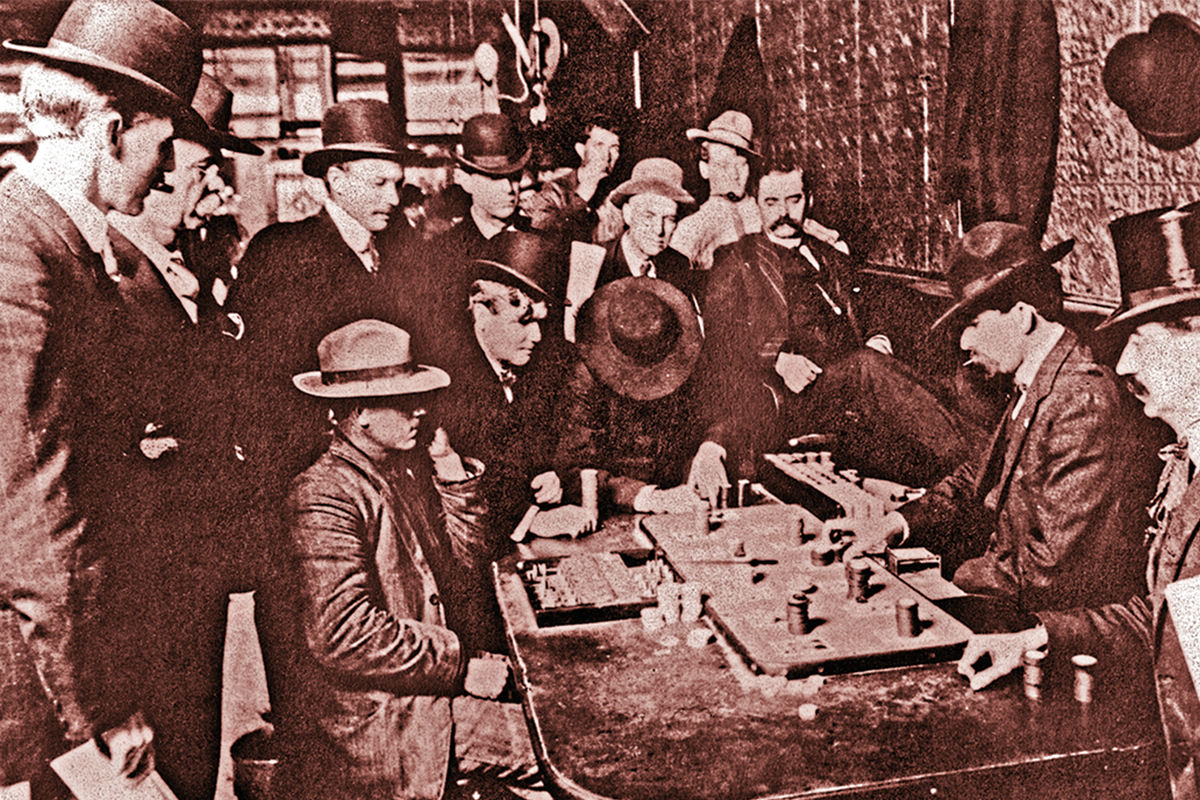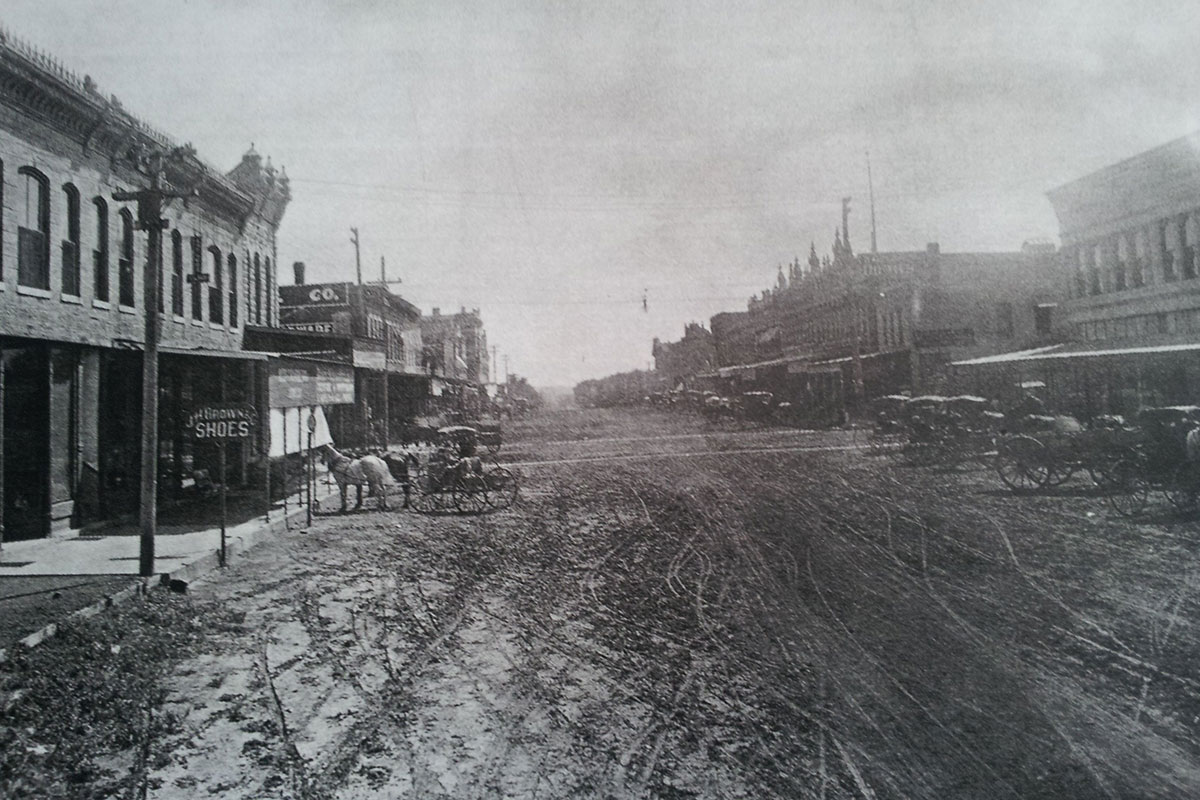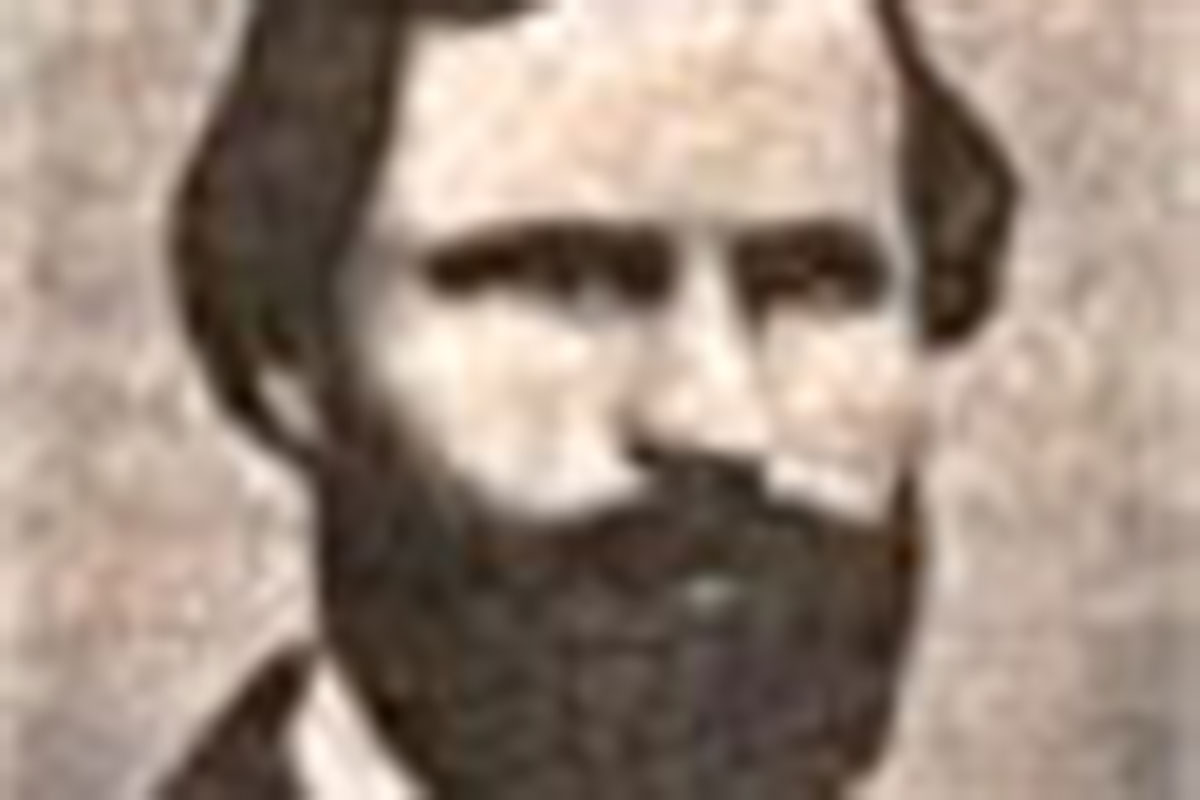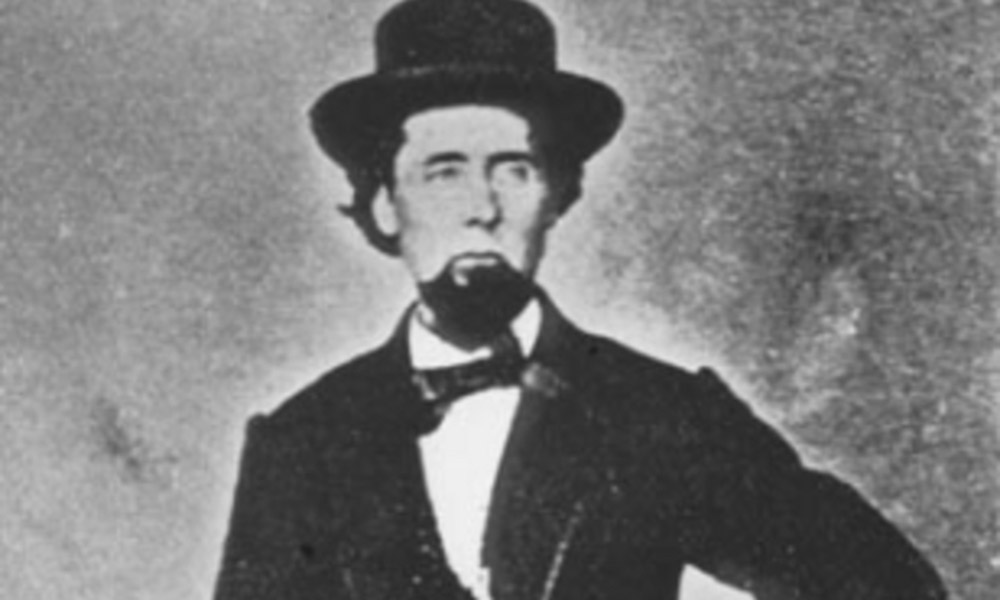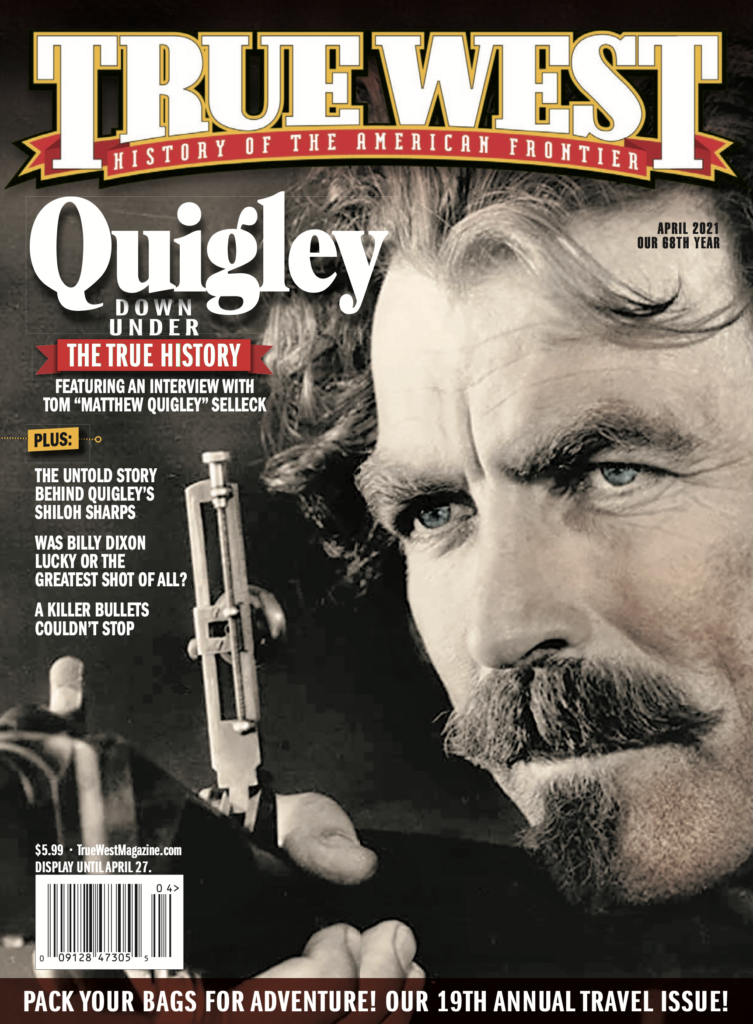GAMBLER JOHNNY MURPHY WAS THE FACE OF AN ICONIC WESTERN PHOTO.
Eight months after the murder of notorious Irish gunfighter James Leavy in front of the Palace Hotel in Tucson, Arizona Territory, in 1882, professional gambler and fellow Irishman Johnny Murphy rose to make a statement upon his acquittal:
Your honor, I thank you and the jury, but I desire to say that I have lived all my life on the frontier. I was honorably discharged from the navy, when a young man, on the coast of Florida, and came right through to the frontier. I have been amongst rough men all my life, have stopped many a bad fight, and never before been in any trouble. I regret this. I regret this occurrence, but what I did was done by me conscientiously and with a belief that it was all I could do to save my own life, and it was done in self-defense.
Murphy, along with accomplices William Moyer and David Gibson, shot down Leavy in a hail of small-caliber gunfire after a night of heated arguments over one of Murphy’s faro tables at Tucson’s Fashion Saloon. Immediately afterwards all three surrendered and were placed in the county jail and the protective custody of Pima County Robert Havlin “Bob” Paul. Testimony began in a preliminary hearing against the three defendants when suddenly the trio escaped the county jail in what the Arizona Weekly Citizen called “a bold and successful break for liberty by desperate criminals.”
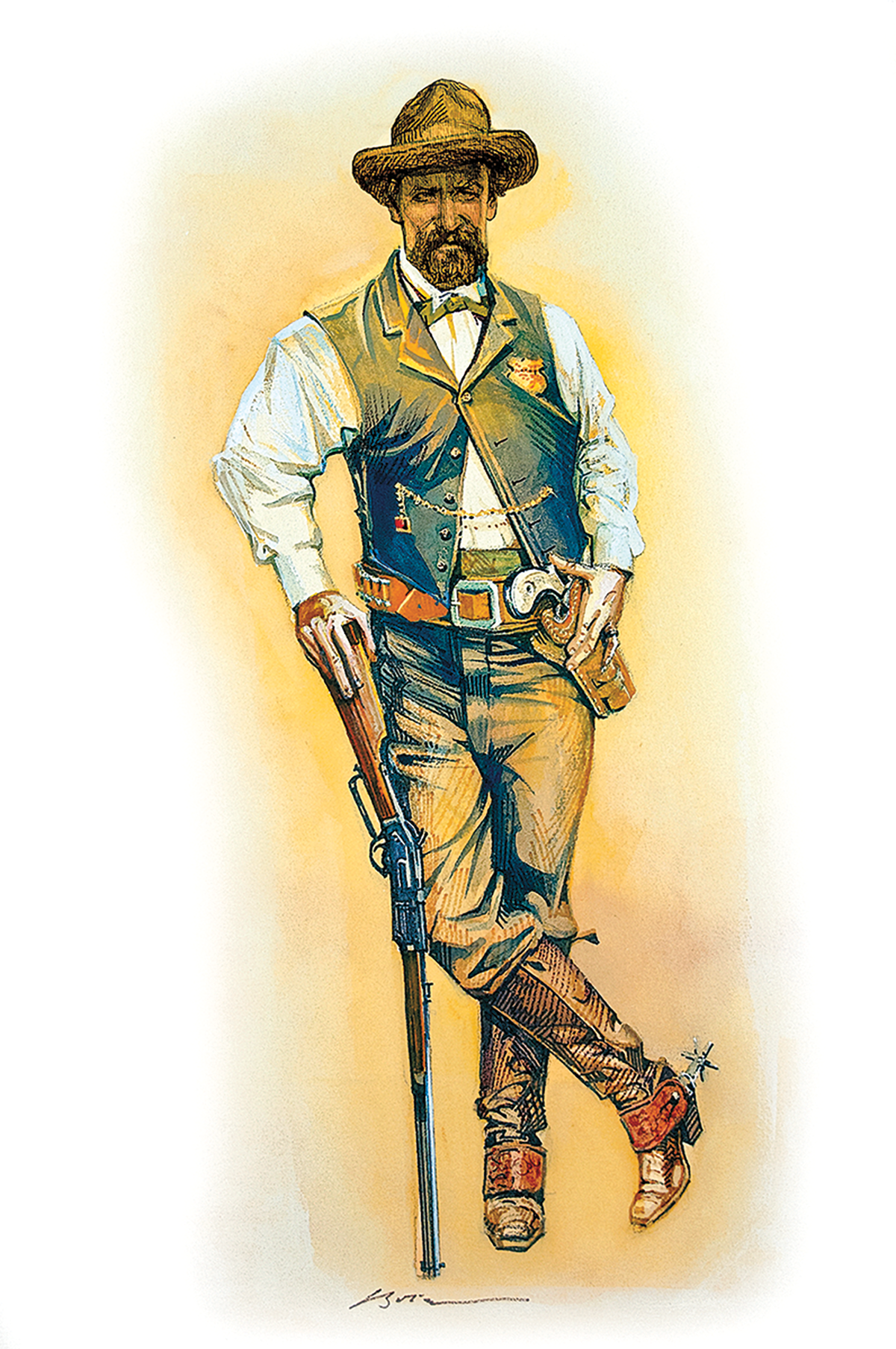
– ORIGINAL ARTWORK BY BOB BOZE BELL
The details of the daring escape by Murphy, Moyer and Gibson as well as several other hard cases, including Arizona bad-man Joseph Casey, were muddled by knee-jerk press reports and rumors. However, justice was soon at hand and a few months later, in December 1883, a crowd gathered outside the train depot in Tucson anxiously awaiting their first glimpse of two of the escapees, Murphy and Gibson, when word was received that Sheriff Paul was arriving from California after capturing the two men.
Moyer had made his way to Colorado via northern Mexico and El Paso, Texas, but was soon caught by the noted detective David Cook of the Rocky Mountain Detective Association., Murphy and Gibson remained fugitives for some time afterwards. Relentlessly pursuing leads, Sheriff Paul captured Murphy and Gibson in the desert badlands of California, where it was reported that the two men were living under “assumed names” and Gibson had been driving a stage between the towns of Fenner and Providence in San Bernardino County. When the prisoners were returned, prosecution resumed for the murder of Leavy. Moyer was the only one ultimately convicted of a crime and sentenced to a life’s term at Yuma Territorial Prison. In the years that followed, Murphy appeared sporadically in the criminal record, but in 1903 he was captured in one of the most famous and reproduced images of the American West.
Born in Ireland in 1847, Murphy first entered the record shortly after the Civil War as a Landsman aboard the USS Contoocook, a screw sloop-of-war. Named for a river and village in New Hampshire, the Contoocook was launched late in the war at the end of 1864 and commissioned in the spring of 1868. Her first cruise was as the flagship for the North Atlantic Squadron sailing to the West Indies. Sometime during this period, Murphy was admitted to the Naval Hospital at Portsmouth, New Hampshire, after becoming ill from exposure from “washing deck.” What ultimately brought Murphy to Arizona remains unclear, but evidence suggests early mining opportunities attracted Murphy to central Arizona.
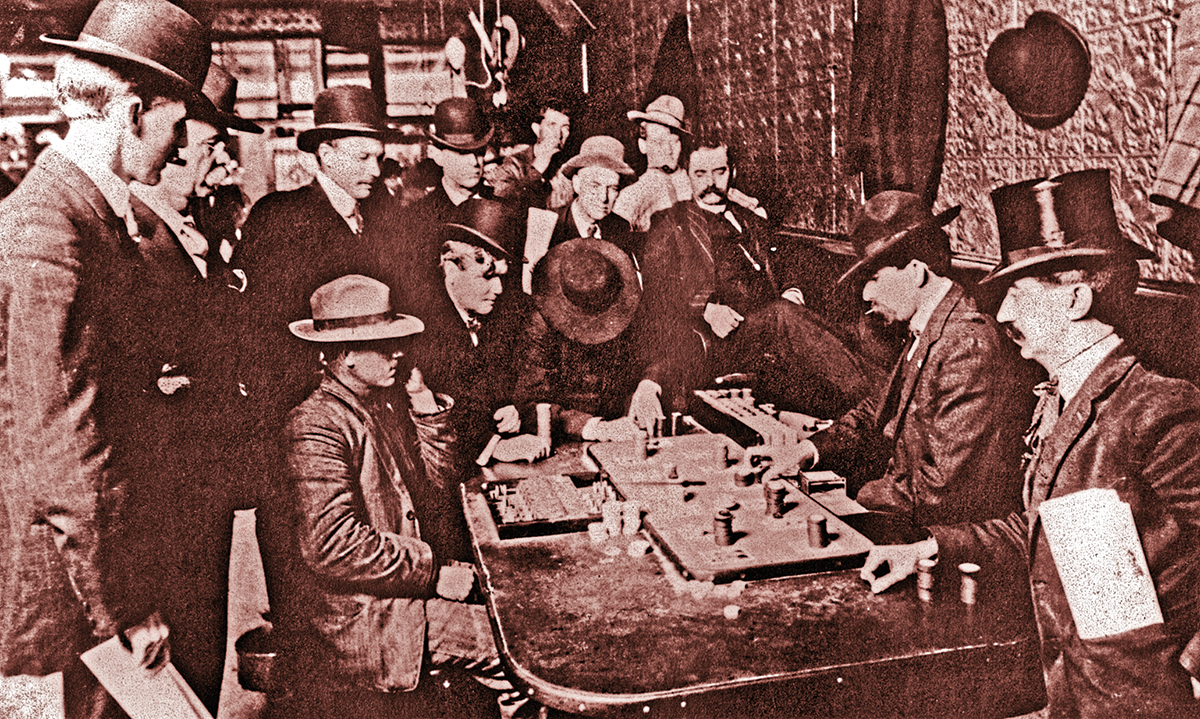
– TRUE WEST ARCHIVES –
In 1880, Pima County Sheriff Charles Shibell noted Murphy into the Great Register of Pima County. Two years later, in 1882, Murphy is known to have been operating faro tables at several saloons in Tucson with fellow gamblers David Gibson and William Moyer in his employ. Gibson, a noted Tucson card sharp, had a run-in with “Big Ed” Byrnes’s Top-and- Bottom Gang of con men and gamblers recently expelled from Benson during the annual San Augustin Festival in Tucson. On September 8, 1881, the Arizona Daily Star reported:
The usual amount of gaming was in progress, and the “sure thing” crowd were still exhibiting numerous tempting devices for trapping the unwary. A fight occurred on the feast grounds between Dave Gibson and one of the “top- and-bottom” gang. The latter used a revolver freely in clubbing Gibson over the head, cutting him quite badly.
The attraction to Tucson as a gambling center drew James Leavy, a veteran of the rough gambling dens of San Francisco, Deadwood, Pioche, Cheyenne and Tombstone. Hot-tempered, armed with a national reputation, and dangerous when drunk, Leavy strongly accused Murphy and his faro dealer, Moyer, of running a “crooked game” at Tucson’s Fashion Saloon on Congress Street. Leavy demanded a duel with Murphy to settle the score. Knowing a fair fight with Leavy would likely end in his own death, Murphy enlisted the help of his fellow gamblers and set out to even the playing field. As they approached Leavy staggering down dusty Meyer Street, only briefly illuminated by the overhead gas lights, Murphy opened fire. Leavy, a veteran of numerous gunfights, fell and died almost instantly. Murphy would testify that as he and Leavy argued, Murphy said:
I says, “I want him [Leavy] to understand that I ain’t a bit afeared [sic] of him…” I walked up to him and said, “Mr. Levy [sic], I understand you have said I am a thief, and my game is a thieving game. There is one thing I want you to distinctly understand. I never played a dollar against a drunk, but I have many a time taken his money and put it behind the bar and give it to him the next day. My game has always been dealt on the square, and I defy you or anyone else to prove that a dishonest card was ever turned at my table, and if you say my game is a thieving game you are a liar…
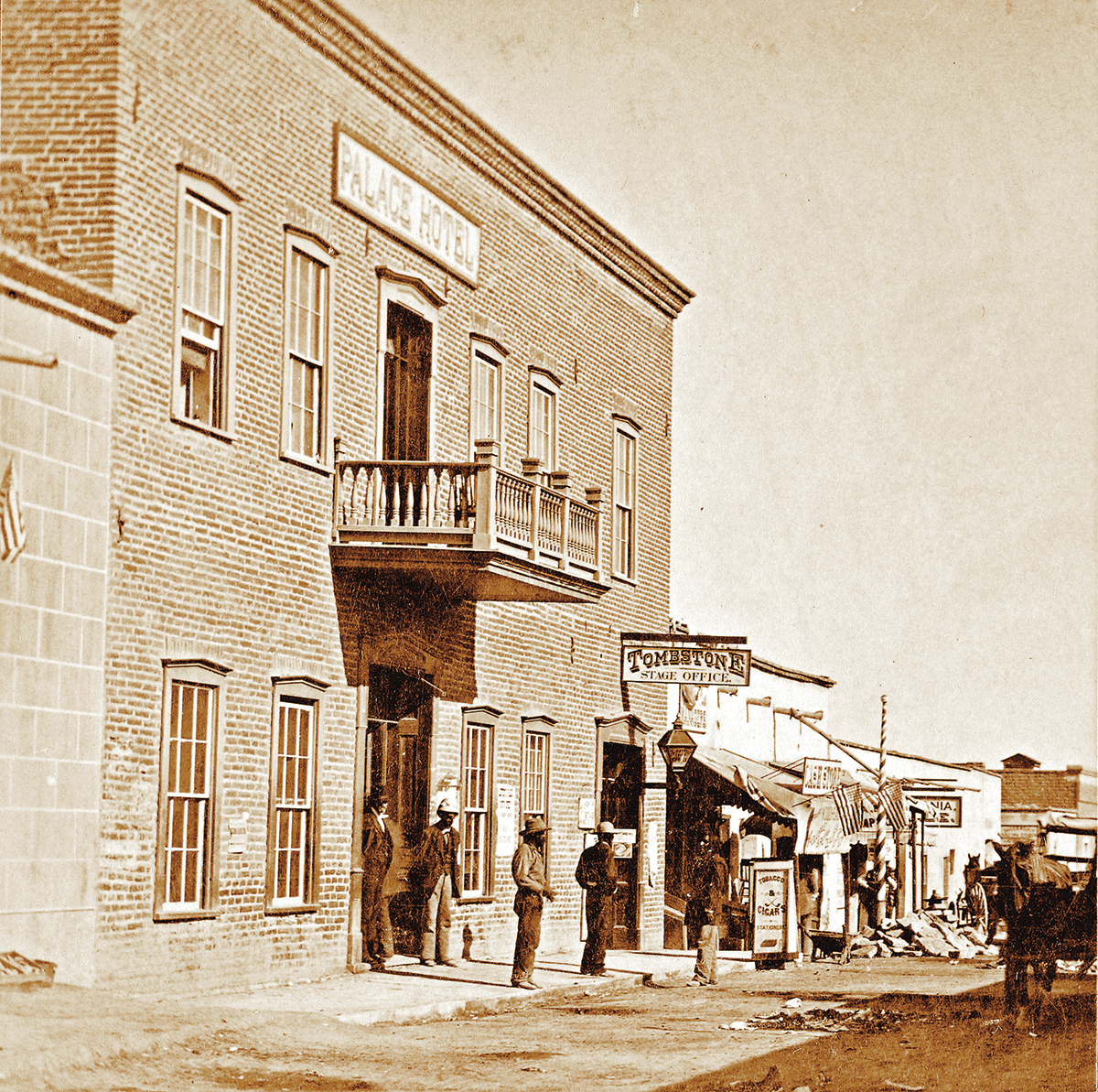
Following his acquittal, Murphy remained quiet, but his presence in the gambling underworld was still strong. Evidence supports that Murphy was heavily involved in gambling rackets in Tucson and Bisbee, a mining boomtown south of Tombstone. Both cities record several arrests against Murphy for various charges well into the early 1900s. In 1903, pioneer photographer William E. (W.E.) Irwin staged a series of photos inside Bisbee’s Orient Saloon. One of these images, “Orient Saloon at Bisbee, Arizona…Faro game in full blast” became one of the most widely distributed and easily recognized images of the frontier, but few know that the faro dealer in the photograph is none other than Johnny Murphy. Shortly after the photograph was taken, Cyrus Noble Whiskey adapted the image for use in its advertising campaigns. An original Cyrus Noble Whiskey advertisement using Irwin’s image hangs today in the Bird Cage Theatre Museum in Tombstone.
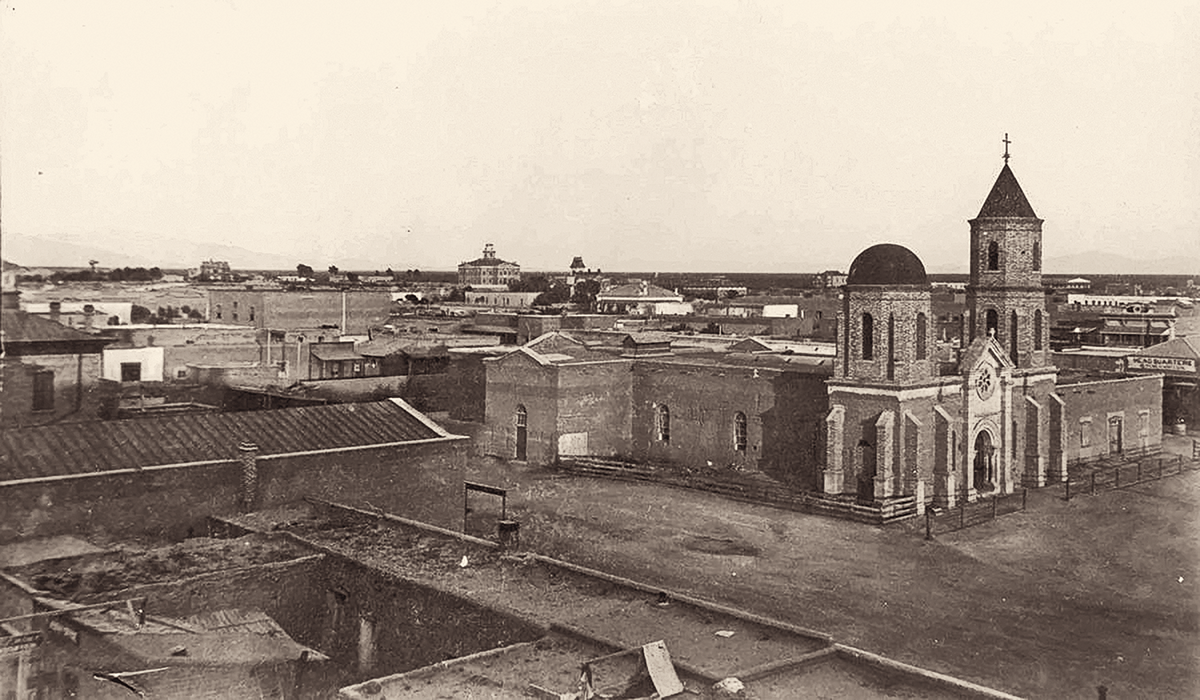
Johnny Murphy died on March 27, 1926, in Tucson. Buried in an unmarked grave in Tucson’s Evergreen Cemetery, Murphy seems to have earned redemption and forgiveness with his obituary from The Arizona Republican:
Death Thursday claimed one of the few remaining picturesque characters of Tucson’s wide-open gambling days in the passing of John Murphy, resident of Arizona since the early eighties when he figured as one of the professional gamblers of Tucson and one of the most skillful rough-and-tumble fighters of the old regime. He was 74 years of age at the time of his death and retained much of his old-time robust vigor to the last.
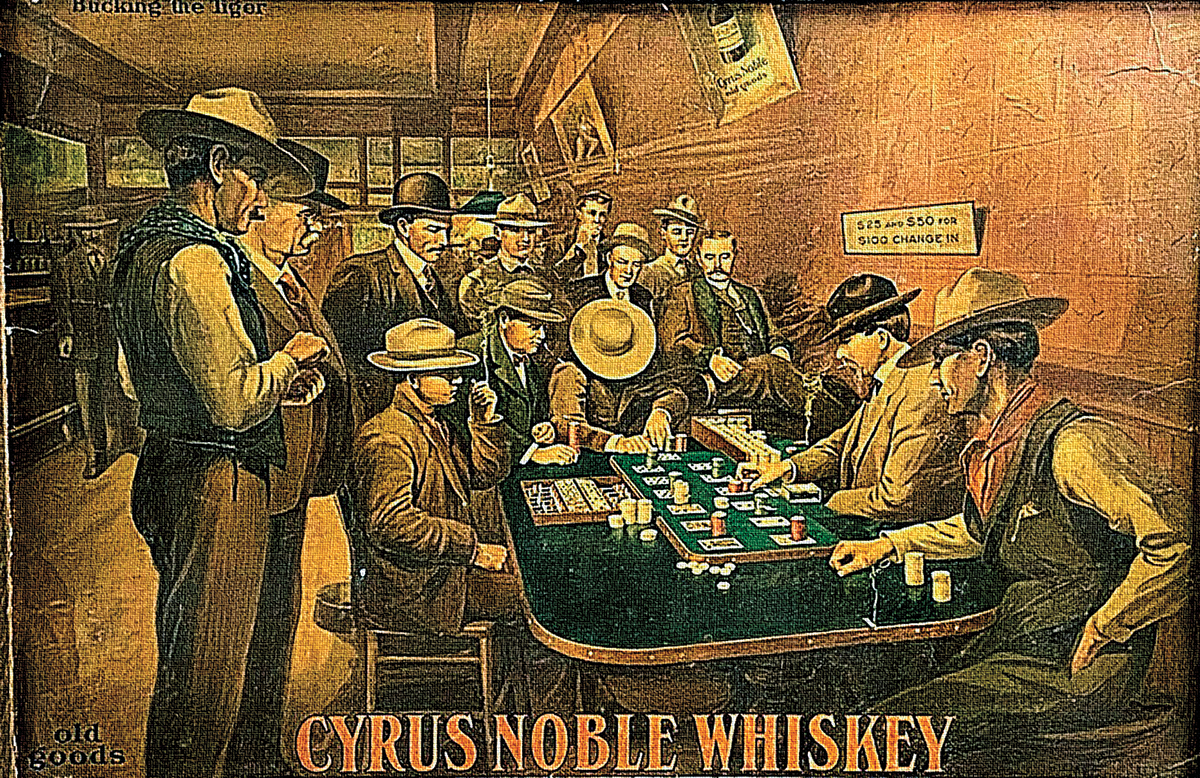
– AUTHOR’S COLLECTION –
Although Murphy admitted to the murder of Leavy, he was eventually acquitted on grounds of self-defense. William Moyer, found guilty of murder in the second-degree, was pardoned five years later, on March 22, 1888, by Territorial Governor C. Meyer Zulick.
The governor’s official pardon echoed the scores of letters issued on behalf of William Moyer:
And Whereas, it is represented to me by leading citizens of the County of Pima, in whose judgment I have confidence, that the circumstances surrounding this case present exceptionally strong grounds for Executive clemency… Whereas an examination of the case establishes the fact that the principal, John Murphy, and accessory, David Gibson, both, subsequently to the conviction of William Moyer, were acquitted, and found innocent of the crime alleged… the evidence establishes the additional fact that the said Levy [sic] had frequently threatened the life of the said William Moyer, and in the altercation which led to the said Levy’s [sic] death, which was upon public highway, the said William Moyer had the same justification for his action, as had the said John Murphy and David Gibson.
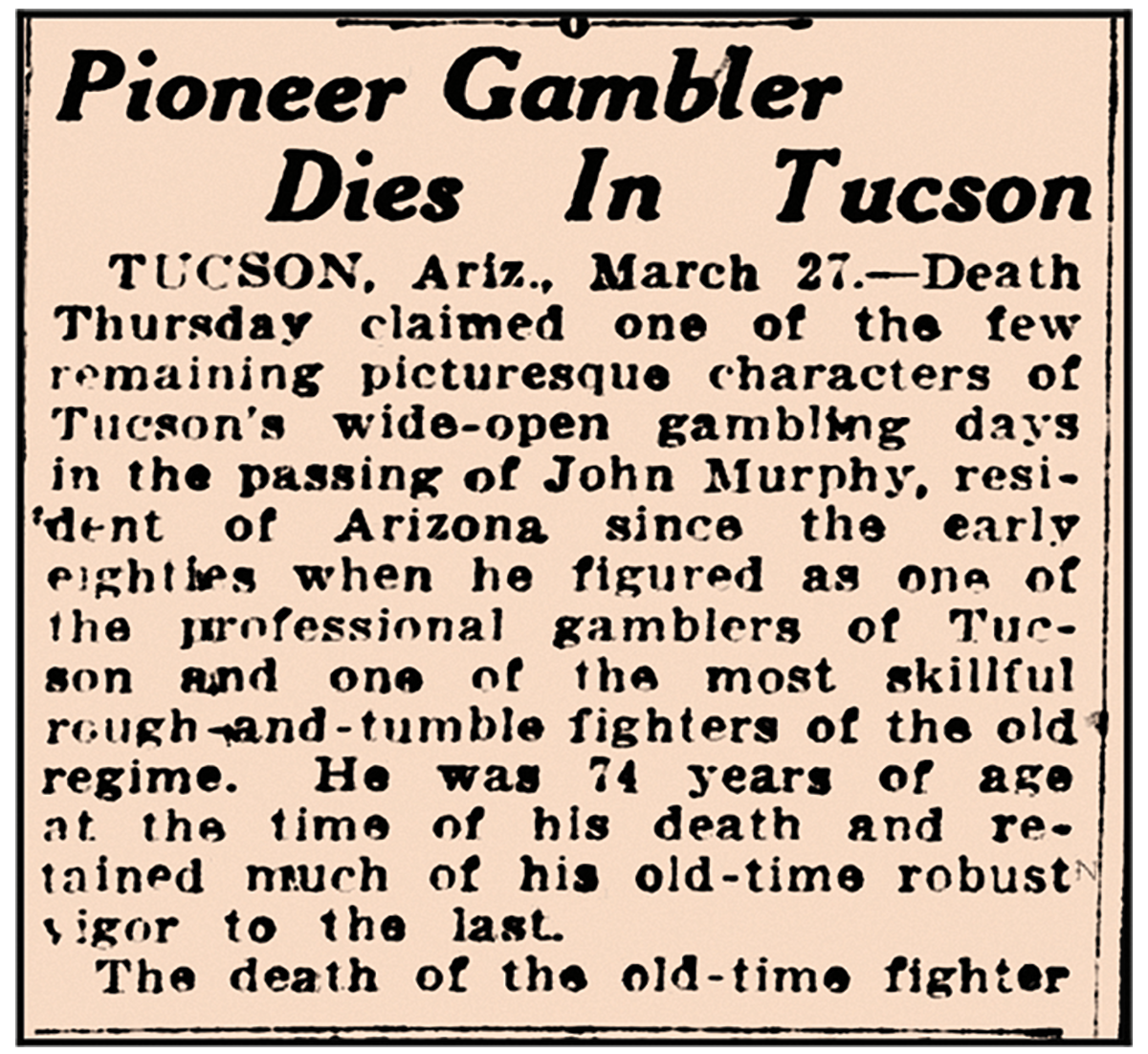
– NEWS CLIPPING FROM MARCH 28, 1926 “ARIZONA REPUBLICAN” COURTESY NEWSPAPERS.COM–

